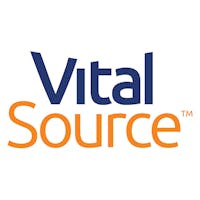The amount students spend on textbooks has risen drastically— 82 percent over the past 10 years. How can institutions address this burden on students?
The inclusive-access model may hold an answer. Instead of having students hunt down the most cost effective ways to source textbooks on their own, an institution’s learning management system delivers students their etextbooks on or before the first day of class. This ensures all students—including those who would have delayed or forgone purchasing their books due to high costs— have access to the required materials necessary to succeed in class.
Colleges and universities that run these programs successfully keep the following best practices in mind:
1. Be clear about your reasons.
The only reason to launch an inclusive-access program is to ensure students get access to their required course content on day one and to lower the total cost of education for students. At Mississippi's Hinds Community College, students save an average of 48.5 percent of book costs through the inclusive-access program. This is an equality of opportunity initiative to guarantee that students have the content they need—books carefully selected by their professors—to be successful.
2. Know who owns the process.
Designate someone on campus to be responsible for understanding course and content, and matching both to students across the institution. In many cases, bookstore managers are perfectly placed to play a central role in the transition to digital content delivery. They already collect the relevant information and specialize in the logistics of distributing course materials. Furthermore, they often have the ability to bill student accounts.
3. Select the right digital content.
When possible, content should be responsive, accessible, and interactive. Responsive design ensures content will display appropriately on the screen size from which it is accessed; accessible content is fully available to learners with visual challenges. Publishers can also include formative and summative assessments, which provide students with the feedback they need to study efficiently and effectively. We want students to see assessment as an integral part of the learning process as opposed to simply a grade. Anything that requires activity or interaction from students—including video and audio where appropriate—helps keep them engaged with the content. Today's EPUB 3 file format makes it possible to make a truly digital first piece of content.
4. Choose a platform that integrates with institution systems and allows for 100% offline access.
To work, inclusive-access has to be incredibly simple for all stakeholders, including students, faculty, and administrators. This means discouraging manual processes—and when your LMS integrates with your content delivery platform, all manual processes are eliminated. Students just check their courses in the LMS; all of their etextbooks are right there, listed with each class. Student Information System (SIS) integration allows for seamless billing. Students should also have the option to download etextbooks to their devices, so they can access all of their content even if they are not connected to the internet. Study should not be limited by connectivity.
While the content is delivered to all students on day one of class, it’s important to note that federal regulations mandate that students should—in most cases—be given the ability to opt out of the program and buy books on their own. For that reason, it’s important to select a provider that includes tools for opt out—for example, Verba Connect's inclusive-access platform.
5. Encourage faculty buy-in.
With an inclusive access approach the only thing faculty have to do is select content—just as they always have. Ideally, they will also easily increase their course effectiveness by taking advantage of digital engagement tools, such as the highlighting, note-taking, and other features that are available in VitalSource Bookshelf®. They can call attention to key concepts by posting links in the LMS that direct students to specific places in the texts. And they can share their own highlights and notes with students to provide study guidance or focused questions. We have seen strong positive correlations when faculty and students interact together with the digital content.
The cost-saving opportunity that digital course materials brings is significant—and, for some students, truly transformational. At Tennessee’s Northeast State Community College, a student saved nearly $400 by buying etextbooks instead of print. She told school officials she planned to use the money she saved to buy winter clothes for her children.



